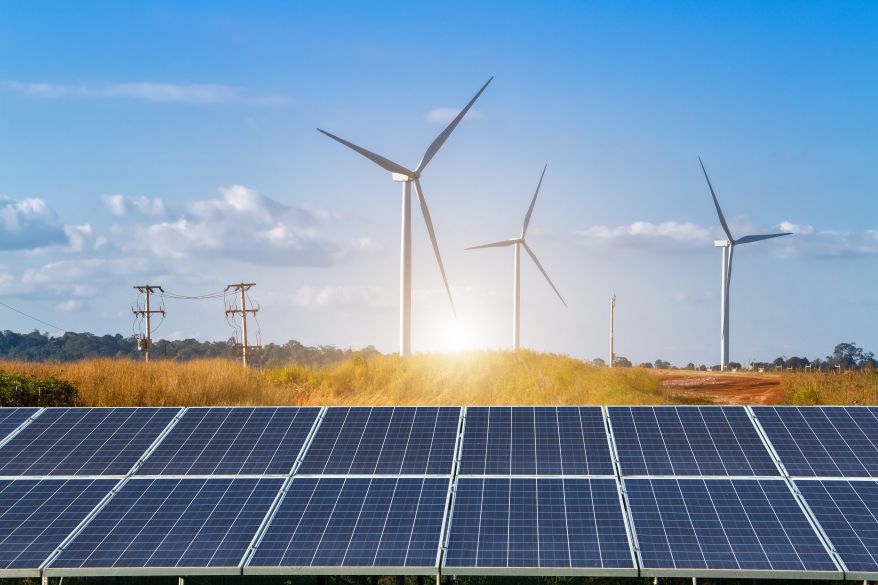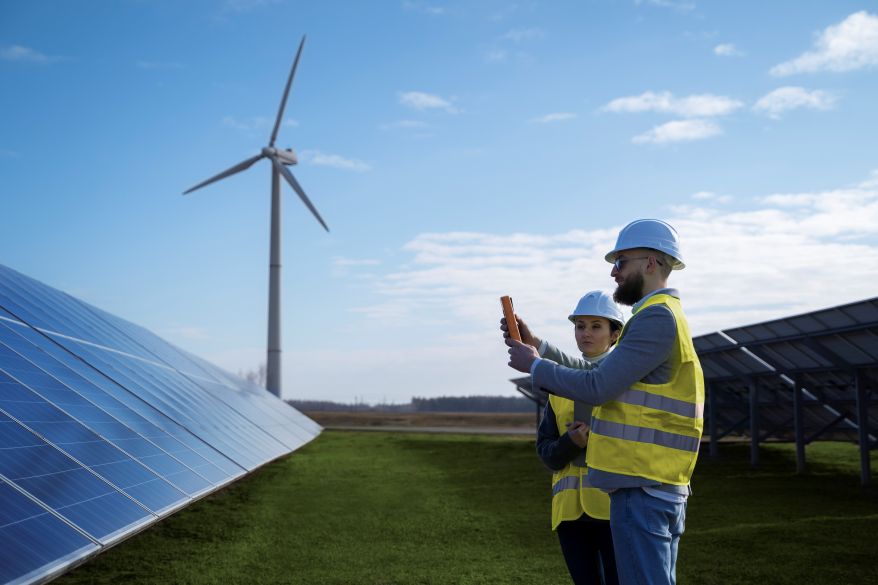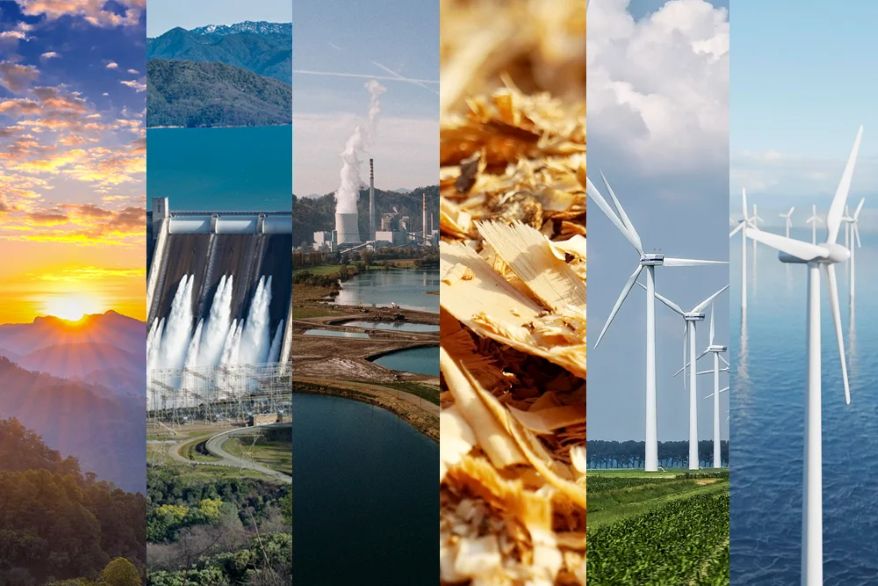
Renewable energy comes from sources that nature restores quickly. Understanding Renewable Energy means knowing that solar, wind, and water create energy that does not run out. In fact, this energy is called clean energy because it does not pollute the air. Moreover, renewable resources help people protect the planet. As a result, they lower harmful gases and support a green energy future. In addition, clean and renewable energy also gives hope for a safer world. Today, people use renewable sources to make energy for homes and cities. Therefore, everyone can help by choosing clean energy options
What Is Renewable Energy

Renewable energy stands out because it comes from natural processes. Unlike fossil fuels, these processes never run out. In other words, people call these renewable sources. For example, they include sunlight, wind, water, and heat from the earth. In fact, these energy sources keep coming back. Therefore, they do not get used up like oil or coal.
Some key features of renewable energy are:
- Sustainability: Energy from renewable sources lasts for generations.
- Clean production: These energy sources do not create much pollution.
- Availability: Many places on Earth have access to renewable energy sources.
- Diversity: There are many types of renewable energy. Each type uses a different part of nature.
How It Works
Renewable energy works by capturing power from renewable sources. For instance, solar panels collect sunlight. Similarly, wind turbines use wind to spin blades. In the same way, hydropower plants use moving water to turn turbines. Additionally, biomass uses plants or waste to make energy. Finally, geothermal plants use heat from deep underground.
The process often looks like this:
| Renewable Source | How It Makes Energy | Example Use |
|---|---|---|
| Sunlight | Solar panels | Home electricity |
| Wind | Wind turbines | Power for farms |
| Water | Dams/turbines | City power |
| Plants/Waste | Burning/biogas | Heating homes |
| Earth’s Heat | Geothermal plants | Hot water supply |
Energy from renewable sources moves through wires to homes and businesses. Then, people use this energy for lights, machines, and heating. Moreover, renewable energy types work together to meet different needs. As a result, using these energy sources helps lower pollution and saves resources for the future.
Renewable Energy Types

Renewable energy types use natural processes that never run out. In addition, these energy sources help people create clean power. As a result, they support a healthy planet and a strong future. Moreover, each type uses a different part of nature. Therefore, people call these the main renewable energy sources.
Solar Energy
Solar energy comes from the sun. Every day, the sun gives off light and heat. To capture this, people use solar panels to collect the energy. Then, the panels turn sunlight into electricity. This process, in fact, is called solar power. Moreover, solar power works well in sunny places. As a result, it can power homes, schools, and businesses.
- How it works:
- Solar panels collect sunlight.
- The panels change sunlight into electricity.
- The electricity powers lights and machines.
Solar energy does not create air pollution. It helps lower energy bills.
Solar energy is easy to use on rooftops. People can use solar power in cities and rural areas. Solar energy supports clean living and saves money.
Wind Energy
Wind energy uses moving air to make power. To do this, wind turbines have large blades. When the wind blows, it spins the blades. Next, the spinning blades turn a generator. Then, the generator makes electricity. This process, in fact, is called wind power.
- How it works:
- Wind blows and moves the blades.
- The blades spin a shaft.
- The shaft turns a generator.
- The generator creates electricity.
Wind energy works best in open areas. Farms and hills often use wind turbines. Wind power does not pollute the air. It helps reduce the use of fossil fuels.
Wind energy is a clean and safe way to make electricity.
Wind energy is one of the fastest-growing renewable energy technologies. Wind power supports jobs and local communities.
Hydropower
Hydropower uses moving water to make energy. In many cases, rivers and dams help create this power. As the water flows, it moves through turbines. Then, the turbines spin and make electricity. This process, in fact, is called hydropower generation.
- How it works:
- Water flows from a river or dam.
- The water moves through turbines.
- The turbines spin and create electricity.
Hydropower is a steady source of energy. It can provide power day and night. Hydropower does not create air pollution.
Hydropower supports clean cities and strong communities.
Hydropower is one of the oldest renewable technologies. It helps balance the power grid.
Biomass
Biomass uses plants and waste to make energy. For example, people burn wood, crops, or waste. As a result, the burning creates heat. Then, the heat makes steam. Next, the steam turns a turbine. Finally, the turbine makes electricity.
- How it works:
- People collect plants or waste.
- The material is burned or turned into gas.
- The heat or gas makes electricity.
Biomass helps use waste that would go to landfills. It can lower pollution and support farmers.
Biomass is a flexible renewable energy source.
Biomass can provide heat and power for homes and factories.
Geothermal
Geothermal energy comes from heat deep inside the earth. In fact, hot rocks and water underground give off heat. To use this, people drill wells to bring the heat to the surface. Then, the heat makes steam. Next, the steam turns turbines. Finally, the turbines make electricity.
- How it works:
- Wells bring hot water or steam to the surface.
- The steam turns turbines.
- The turbines make electricity.
Geothermal energy works all day and night. It does not depend on the weather.
Geothermal is a steady and clean energy source.
Geothermal energy can heat homes and provide hot water.
Table: Main Types of Renewable Energy
| Type | Source | How Energy is Made | Key Benefit |
|---|---|---|---|
| Solar | Sunlight | Solar panels | No air pollution |
| Wind | Wind | Wind turbines | Clean electricity |
| Hydropower | Water | Dams/turbines | Reliable power supply |
| Biomass | Plants/Waste | Burning/biogas | Uses waste |
| Geothermal | Earth’s heat | Wells/turbines | Works all the time |
Renewable Energy Sources vs Nonrenewable
Renewable energy protects the planet. For example, it uses natural energy sources like sun, wind, and water. Unlike fossil fuels, these sources do not harm the land or air. Moreover, clean energy keeps the air fresh. In addition, it does not leave waste behind. As a result, people see fewer oil spills and less damage to nature.
Non-renewable energy sources like coal and oil cause problems. For instance, they pollute rivers and soil. In addition, they also destroy animal homes. Moreover, mining and drilling hurt the earth. As a result, people see more trash and dirty air.
Resource Availability
Renewable energy comes from sources that never run out. For example, the sun shines every day. In the same way, wind blows in many places. Similarly, water flows in rivers. As a result, these energy sources stay strong for the future. Therefore, people can use them again and again.
Nonrenewable energy will not last forever. Oil, coal, and gas take millions of years to form. People use them faster than nature makes them. One day, these fuels will run out. This makes the energy transition to green energy very important.
| Energy Type | Will It Run Out? | Example Source |
|---|---|---|
| Renewable | No | Sun, wind |
| Nonrenewable | Yes | Oil, coal |
Emissions
Renewable energy creates very little pollution. For example, solar and wind power do not release harmful gases. In addition, hydropower and geothermal also keep the air clean. As a result, these energy choices help fight climate change.
Non renewable energy makes a lot of emissions. For example, burning coal and oil sends carbon dioxide into the air. As a result, this gas warms the planet. Moreover, it also causes health problems for people.
Using renewable energy helps lower emissions and keeps the air safe.
Also Read https://nycstem.in/the-changing-face-of-our-planet-climate-change-and-the-environment/
Using Renewable Energy in Daily Life
Home Uses
People use renewable energy in the home in many ways. For instance, many install solar panels on rooftops. These panels, in turn, make renewable electricity for lights and appliances. In addition, some families use small wind turbines in open areas. These turbines, therefore, help power homes. Moreover, others use heat pumps that take warmth from the ground. This system then heats water and rooms. Finally, many homes use smart meters to track energy use. As a result, these tools help save power and money.
Business Uses
Businesses also use renewable energy. For example, many companies place solar panels on office roofs. These panels, in turn, provide clean energy for computers and machines. In addition, some factories use wind turbines to make power. Moreover, grocery stores use renewable systems to keep food cold. Similarly, many offices use green building designs. These designs, as a result, use less energy and more natural light. Finally, some companies buy renewable power from the grid.
- Table: Common Business Uses
| Business Type | Renewable System | Main Benefit |
|---|---|---|
| Office | Solar panels | Lower costs |
| Factory | Wind turbines | Clean power |
| Grocery Store | Green cooling | Less pollution |
Community Integration
Communities work together to use renewable energy. For instance, some towns build large solar farms. These farms, in turn, make power for many homes. In addition, others set up wind farms outside the city. Moreover, schools and hospitals use renewable systems for heat and light. Similarly, many cities add renewable sources to the power grid. As a result, this mix helps everyone get clean energy. Finally, community projects often teach people about saving power.
Communities that use renewable energy help protect the planet for all.
Benefits and Challenges
Sustainability
Renewable energy supports a healthy planet. Because of this, these sources never run out. For example, people can use the sun, wind, and water again and again. Therefore, this makes clean energy a smart choice for the future. In fact, many countries see strong renewable energy growth. They do this because they want to protect nature and keep the air clean. Moreover, the energy transition to green energy helps reduce waste. Finally, it also saves resources for the next generation.
Cost
The price of renewable energy technologies has dropped in recent years. Solar panels and wind turbines cost less than before. Many families and businesses save money with clean energy. Some people pay less for power each month. Governments often give support for renewable projects. This makes it easier to start the clean energy transition. However, some systems need a high upfront cost. Over time, savings can make up for this.
| Energy Type | Start Cost | Long-Term Savings |
|---|---|---|
| Solar | High | Yes |
| Wind | High | Yes |
| Biomass | Medium | Yes |
Reliability
Renewable sources can provide steady power. Solar and wind depend on the weather. Hydropower and geothermal work day and night. Many places use a mix of sources. This keeps the lights on even if the sun does not shine. New batteries help store extra energy. This makes clean power more reliable.
Social Impact
Clean energy creates new jobs. For example, people work in factories, on wind farms, and in solar fields. In addition, communities see better health with less air pollution. Moreover, the clean switch supports local economies. As a result, many people learn new skills for the green energy future. Ultimately, the move to renewable sources helps everyone.
Renewable energy comes from sources that never run out. Moreover, it helps people protect the planet and improve health. As a result, many communities see cleaner air and new jobs. For example, people can choose solar panels or wind power for their homes. In addition, they can also learn more from trusted resources.
References
- Schindewolf, U., & Böddeker, K. W. (2010). Renewable Energies. Elsevier BV. https://doi.org/10.5004/dwt.2010.831
- The impact of renewable energy sources on the environment. (2024). Technical University of Kosice – Faculty of Mining, Ecology, Process Control and Geotechnology. https://doi.org/10.46544/ams.v28i4.13
- Ramos Pires Manso, J., & Bashiri Behmiri, N. (2020). Renewable Energy and Sustainable Development. Editorial Universidad de Almeria. https://doi.org/10.25115/eea.v31i1.3259
- Atstāja, D. (2025). Renewable Energy for Sustainable Development: Opportunities and Current Landscape. MDPI AG. https://doi.org/10.3390/en18010196